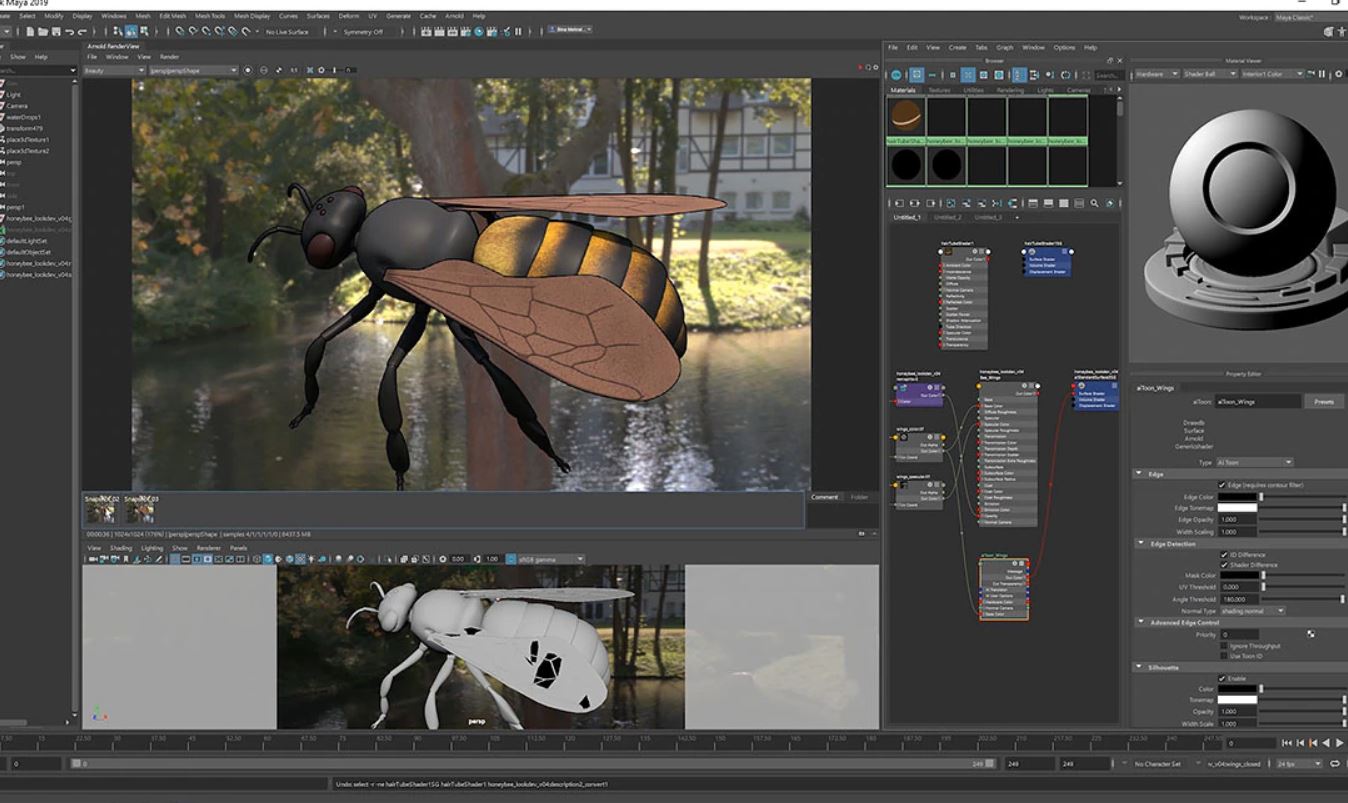

With real-time Gouraud shading in any or all viewports, immediate feedback is available to show relative effects of many material and lighting changes. Dialogs such as the material editor appear in floating windows, so the user can always maintain focus on the scene under construction. MAX presents a consistent, ever-adapting environment. Command dialogs adapt to context, again limiting screen clutter. Collapsible trees are used to present an enormous amount of object data in a well organized, accessible format. The menus are well conceived, with a good mix of icons and text buttons.

Rollout menus permit on-the-fly menu compression, providing efficient screen-space utilization for the myriad of commands. With a little tweaking of mesh resolution, the results were excellent, and MAX can even optimize the resultant meshes to minimize face count for faster processing. Desktop assembler components had to be localized, and Designer models required conversion to explicit ACIS solids for best results. Both techniques performed well, and the latter exemplifies the ease of installing and using MAX plug-ins. DWG import plug-in downloaded from the Kinetics Web Page. I imported solid models into MAX using AutoCAD's. Suffice it to say that the object creation and modification tools within MAX are marvelous. As a mechanical designer, I won't pursue these aspects in great detail, and will concentrate upon features closely related to the import of CAD models and their subsequent rendering and animation. With modifiers such as bend, taper, twist, noise and warps, it's possible to create amazingly complex shapes from a simple 3-D primitive-a 3-D artist's dream. You can return to any creation or modification step in an object stack insert, delete, or modify parameters then return to the current stage of editing. Primitive objects created in MAX are fully parametric. Operating system, and the results are evident. Running on Windows NT only, MAX fully utilizes this powerful It's hard to imagine more capability in a new


 0 kommentar(er)
0 kommentar(er)
